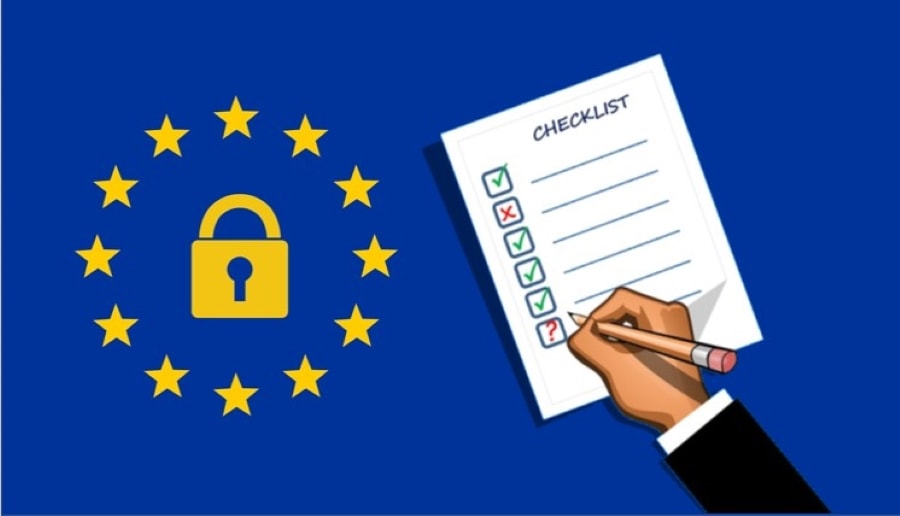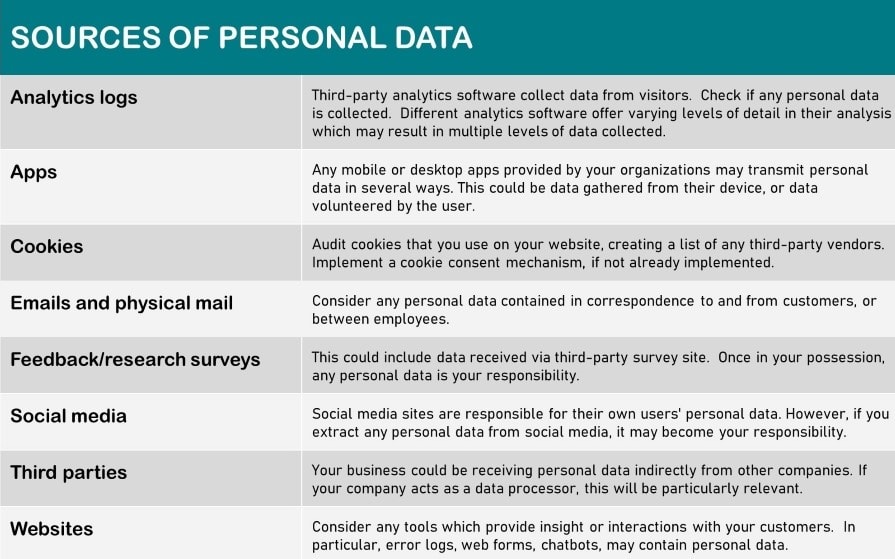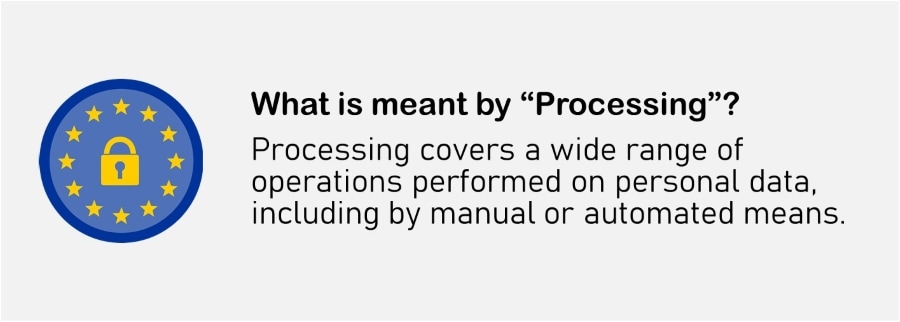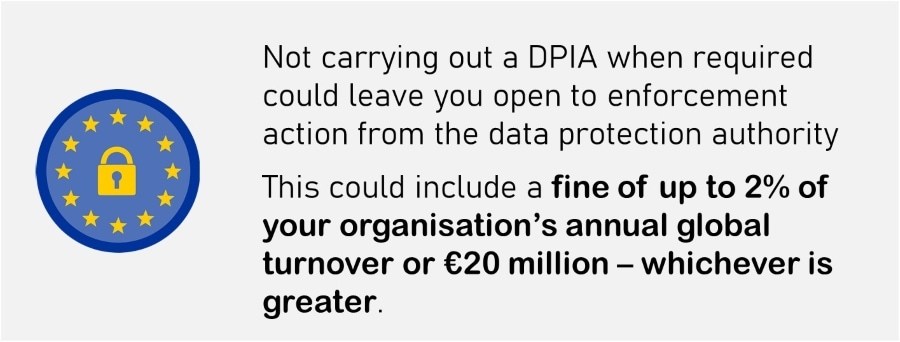Five steps to GDPR compliance

What is GDPR?
The General Data Protection Regulation affects every member state and company that processes personal data from EU residents, such as marketing firms, social media sites, and the data brokers who connect them. RELATED: Introduction to GDPR: A guide to the General Data Protection Regulation for new businesses and start-ups Business models relying on acquiring and processing consumer data at scale must also pay close attention to the new requirements. If a company depends on consent to process data, that consent must now be explicit, informed, and renewed if how the data is used changes after it is collected. 
GDPR compliance in 5 steps
Implement data protection by design
Businesses are anticipated to put the customer at the centre of every decision made and process carried out to remain compliant. This entails incorporating data security into every activity, regardless of the nature of your business. Data regulators are particularly concerned with this planning, as they want to see that companies are thinking about and acting responsibly with any data they collect. This is particularly crucial for firms that rely on third-party processors as part of their business model. Liability clauses mean that you will be held equally responsible for the mishandling of data even if your partner company was at fault. Adhering to this principle will almost certainly necessitate implementing new technical and organizational measures to ensure data protection is considered at every stage of your business. All existing and new services, for example, should account for the various rights granted to data subjects, as well as ensure complete transparency in the data processing. This makes GDPR compliance much easier, but it also allows you to stay ahead of any complications that may arise later on. If your company is the victim of a data breach, demonstrating that you did everything possible to protect user data and uphold their rights as data subjects will go a long way toward appeasing any investigating data regulator. 
Ensure you remain accountable
Adopting privacy-focused business processes is critical, but it is not sufficient: you must also be able to demonstrate that you have done so if asked. This entails documenting the discussions and processes that led to your final implementation. This is as much for your protection as reassuring your customers. It demonstrates that all available security measures were considered and incorporated into your business. Furthermore, any staff who may have access to personal data must be adequately trained; you must develop and implement a robust internal data protection policy that complies with all aspects of GDPR. Organizations with more than 250 employees must keep written internal records of all data processing activities, descriptions of technical and organizational security measures, and documentation of any safeguards applicable to data-transfer mechanisms, among other things. A data protection authority (DPA) may request that your internal records will be reviewed. The more detailed and extensive your documentation, the better. RELATED: Data Protection Impact Assessments (DPIA) It is recommended that a DPIA is conducted whenever new technologies are used to process information in a way that may jeopardize individuals’ privacy rights, such as when large-scale CCTV deployments are implemented. A DPIA, or Data Protection Impact Assessment, will help compile this documentation and identify any potential weaknesses in your data protection measures. Your DPIA should include assessments of the risks to individuals, the need for data processing and retention, any risk-mitigation measures implemented, and a description of your processing operations and their purposes. 
Establish the lawful basis to hold and process data
There is a common misconception regarding GDPR that consent is the most crucial issue to address. More on consent can be found here, and it certainly affects marketing firms and retailers who rely heavily on people choosing to receive newsletters or promotional emails. You need to establish a legal basis for collecting data and sharing it with your customers. For each instance of data collection, you must select a legal basis (or, more likely, each type of data collection). The legal basis for collecting data include:
- That you have an individual’s consent (if the reason you’re collecting the data changes, you must re-ask for consent)
- To comply with a contract with the individual
- If it’s in someone’s vital interests, for example, to protect their life
- Where processing an individual’s personal data is in the public interest, which must be weighed against their interests
- To comply with the law (referred to as a ‘legal obligation’)
RELATED: GDPR lawful basis for processing personal data Your decisions must be justified and documented and demonstrate which basis applies to which data type. Tell your customers which legal basis you’re relying on and why you’re collecting that data in your privacy notice. Because people can withdraw their consent at any time, it is not the most dependable basis for collecting people’s data so another legal basis may be more appropriate. However, if you use consent, explain what a user is opting into and how the data will be used. Ensure that the action of opting in is active rather than passive because GDPR does not permit reliance on pre-ticked boxes or assume that failure to opt out implies consent. Furthermore, any conditions must be detailed separately from standard terms and conditions to be more prominent.
Keep your users informed
Citizens and customers will have the right under GDPR to contest your use of their data or revoke their consent to it. If not already done so, you must appoint (or hire) a data controller and data protection officer to manage these interactions and make their contact information public. These details must also be available to each member state’s supervisory authority. This independent body scrutinizes complaints on behalf of European citizens. It will communicate with supervisory authorities in other member countries, overseen by the European Data Protection Board. Along with your contact information, you must provide a plain-language explanation of how customer data is used. This must include the purpose of data collection, any interests that the controller, collector, or third-party processor may have, who will receive the data, whether it will be transferred to an external agent, and more. If you did not obtain the data directly from the subject, such as if you purchased a mailing list, you are subject to additional obligations. In these cases, you must also inform subjects about the types of personal data you collect and how you obtained their personal data.
Be prepared to delete your data
The GDPR entitles individuals the “right to be forgotten”. This means that subjects can request that their information be removed entirely from your database in certain circumstances. This could happen if a customer withdraws their consent to further data processing. It also covers cases where personal data has been obtained or processed illegally, or the original purpose of gathering it no longer applies. 
Getting Started: Auditing your data
It is critical to audit your data collection and processing activities and, if necessary, update them. Evaluate if any third-party providers you rely on are located outside the European Union. RELATED: Conducting a Data Audit for GDPR The GDPR does not allow the transfer of personal data outside the bloc’s borders unless the recipient country has a data adequacy agreement. A data adequacy agreement means that the EU considers the country’s data protection measures adequate for sending European data.

